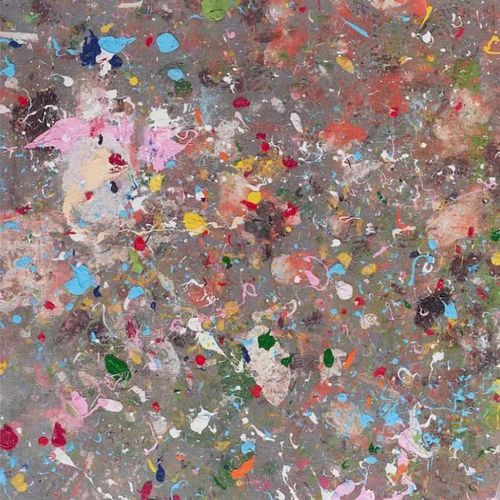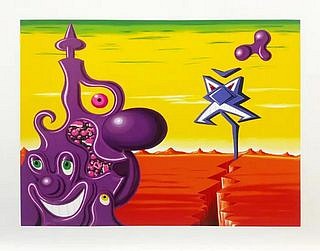Damien Hirst 'H13-7 Mill Bay, Salcombe -2023' Signed & numbered
Lot 83
Categories
Estimate:
$7,000 - $9,000
Absentee vs Live bid
Two ways to bid:
- Leave a max absentee bid and the platform will bid on your behalf up to your maximum bid during the live auction.
- Bid live during the auction and your bids will be submitted real-time to the auctioneer.
Bid Increments
| Price | Bid Increment |
|---|---|
| $0 | $1 |
| $30 | $2 |
| $100 | $10 |
| $500 | $50 |
| $1,000 | $100 |
| $2,000 | $100 |
| $5,000 | $200 |
| $10,000 | $250 |
| $50,000 | $500 |
| $100,000 | $1,000 |
About Auction
By URDE Fine Art Auction
Jul 2, 2024
Set Reminder
2024-07-02 11:00:00
2024-07-02 11:00:00
America/New_York
Bidsquare
Bidsquare : JUNE AFFORDALE ART AND PHOTOGRAPHY SALE
https://www.bidsquare.com/auctions/urde-fine-art-auction/june-affordale-art-and-photography-sale-14875
April sale art & photographs auction Introducing our February auction, Modern, Pop, and Contemporary Fine Art, Sculptures & Fine Photography. URDE Fine Art Auction urdegallery@gmail.com
April sale art & photographs auction Introducing our February auction, Modern, Pop, and Contemporary Fine Art, Sculptures & Fine Photography. URDE Fine Art Auction urdegallery@gmail.com
- Lot Description
Artsist: Damien Hirst
Title: 'H13-7 Mill Bay, Salcombe'
Year: 2023
Medium: Laminated Gicl?e print on aluminium composite panel
Size: 35.4 x 35.4 inches
Edition: Edition of 289
Numbered and hand-signed on the label by the artist.
Publisher: Heni Publishing
Conition: In mint condition
A certificate of Authenticity is included
Contemporary artist, Damien Hirst, had released 12 unique prints after works from his latest series 'Coast Paintings, 'Sea Paintings' and 'Seascapes'. The editions are laminated Gicl?e prints on aluminium composite panel, in sizes ranging from 90 x 90 cm to 135 x 90 cm. The prints are numbered and hand-signed on the label by the artist.
H13-7 Mill Bay, Salcombe by Damien Hirst
Damien Hirst was born in 1965 in Bristol and grew up in Leeds. In 1984 he moved to London, where he worked in construction before studying for a BA in Fine Art at Goldsmiths college from 1986 to 1989. He was awarded the Turner Prize in 1995
Since the late 1980's, Hirst has used a varied practise of installation, sculpture, painting and drawing to explore the complex relationship between art, life and death. Explaining: "Art’s about life and it can’t really be about anything else … there isn’t anything else," Hirst's work investigates and challenges contemporary belief systems, and dissects the tensions and uncertainties at the heart of human experience. At Goldsmiths, Hirst's understanding of the distinction between painting and sculpture changed significantly, and he began work on some of his most important series. The 'Medicine Cabinets' created in his second year combined the aesthetics of minimalism with Hirst’s observation that, "science is the new religion for many people. It's as simple and as complicated as that really." This is one of his most enduring themes, and was most powerfully manifested in the installation work, 'Pharmacy' (1992).
Whilst in his second year, Hirst conceived and curated 'Freeze' - a group exhibition in three phases. The exhibition of Goldsmiths students is commonly acknowledged to have been the launching point not only for Hirst, but for a generation of British artists. For its final phase he painted two series of coloured spots on to the warehouse walls. Hirst describes the spot paintings as a means of "pinning down the joy of colour", and explains they provided a solution to all problems he'd previously had with colour. It has become one of the artist's most prolific and recognisable series, and in January 2012 the works were exhibited in a show of unprecedented scale across eleven Gagosian Gallery locations worldwide. In 1991 Hirst began work on ‘Natural History’, arguably his most famous series. Through preserving creatures in minimalist steel and glass tanks filled with formaldehyde solution, he intended to create a "zoo of dead animals". In 1992, the shark piece, 'The Physical Impossibility of Death in the Mind of Someone Living' (1991) was unveiled at the Saatchi Gallery’s 'Young British Artists I' exhibition. The shark, described by the artist as a "thing to describe a feeling", remains one of the most iconic symbols of modern British art and popular culture in the 90's. The series typifies Hirst's interest in display mechanisms. The glass boxes he employs both in 'Natural History' works and in vitrines, such as 'The Acquired Inability to Escape' (1991), act to define the artwork's space, whilst simultaneously commenting on the "fragility of existence".ExcellentCondition
- Shipping Info
-
Bidder Can Make Shipping Arrangements, Local Pick-Up, In-House Shipping
-
- Payment & Auction Policies
-
Available payment options
-
- Buyer's Premium



 EUR
EUR CAD
CAD AUD
AUD GBP
GBP MXN
MXN HKD
HKD CNY
CNY MYR
MYR SEK
SEK SGD
SGD CHF
CHF THB
THB














